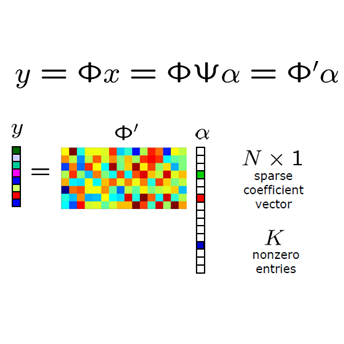It is of paramount importance to achieve efficient data collection in the Internet of Things (IoT). Due to the inherent structural properties (e.g., sparsity) existing in many signals of interest, compressive sensing (CS) technology has been extensively used for data collection in IoT to improve both accuracy and energy efficiency. Apart from the existing works which leverage CS as a channel coding scheme to deal with data loss during transmission, some recent results have started to employ CS as a source coding strategy. The frequently used projection matrices in these CS-based source coding schemes include dense random matrices (e.g., Gaussian matrices or Bernoulli matrices) and structured matrices (e.g., Toeplitz matrices). However, these matrices are either difficult to be implemented on resource-constrained IoT sensor nodes or have limited applicability. To address these issues, in this paper, we design a novel simple and efficient projection matrix, named sparse Gaussian matrix, which is easy and resource-saving to be implemented in practical IoT applications. We conduct both theoretical analysis and experimental evaluation of the designed sparse Gaussian matrix. The results demonstrate that employing the designed projection matrix to perform CS-based source coding could significantly save time and memory cost while ensuring satisfactory signal recovery performance.
翻译:由于许多令人感兴趣的信号中存在着固有的结构特性(例如,广度),压缩遥感(CS)技术被广泛用于IoT的数据收集,以提高准确性和能源效率,除了利用CS作为传输数据损失的渠道编码办法之外,最近的一些结果已开始采用CS作为源代码战略,这些基于CS的源代码方案中经常使用的投影矩阵包括密集随机矩阵(例如,高山矩阵或伯努利矩阵)和结构化矩阵(例如,托普利茨矩阵),但这些矩阵要么难以在资源限制的IoT传感器节点上执行,要么适用性有限。为了解决这些问题,我们在本文件中设计了一个新的简单有效的投影矩阵,名为稀释高斯矩阵,在实际应用IOT应用中容易使用并节省资源。我们用设计的信息总库进行理论分析和实验性评估,利用设计得力的智能矩阵进行精确的存储结果,同时利用设计得力的智能矩阵进行测试,确保精确的存储结果。





